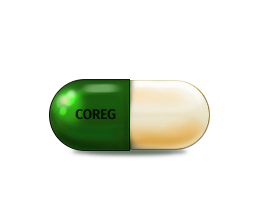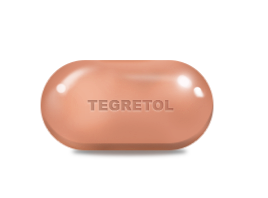Cleocin has bacteriostatic and bactericidal activity depending on concentration of drug, infectious process and condition of an organism of the patient. Active against aerobic and anaerobic streptococcus (except for enterococci), the majority of staphylococcus except for methicillin-resistant strains, bacteroids except for Bacteroides melaninogenicus, spindle-shaped bacteria

Co-Amoxiclav - co-formulated antibacterial agent, combine of bactericidal antibiotic of a broad spectrum of activity, from a group of semi-synthetic penicillin - Amoxicillin and Betalactamase inhibitor.

is given to patients for treating severe acne that do not respond to other medicines

Diflucan - antifungal medicine, possesses highly specific action, inhibiting activity of enzymes of fungus. It is taken at systemic lesions caused by fungus including meningitis, sepsis, infections of lungs and skin as at patients with a normal immune response, and at patients with various forms of immunosuppression.

Enalapril is an angiotensin converting enzyme inhibitor (or ACE inhibitor); administered in hypertensive pediatric patients (from 1 month old and above), adults and elderly patients for treatment

Epitol - mood stabilizing agent and antiepileptic medicine. It is effective for treatment of epilepsy (excepting petit mal), maniacal conditions, prevention of maniac-depressive frustration, alcoholic abstinence, neuralgia of trigeminal and glossopalatine nerves, diabetic neuropathy.

Erythromycin is a macrolide antibiotic of bacteriostatic action. In high concentrations and relatively high-sensitivity microorganisms may have a bactericidal effect.

Floxin - antimicrobic broad-spectrum agent from group of fluroquinolone. It is active concerning the microorganisms producing beta lactamelements and fast-growing atypical mycobacteria. It is taken at respiratory infection, the ENT organs, skin, soft tissues, bones, joints, abdominal cavity, urinary tract.

NSAIDs; has an anti-inflammatory, analgesic and antipyretic effect associated with the suppression of COX1 and COX2 that regulate the synthesis of Pg. Used to inhibit miosis during surgery of cataracts in the treatment of inflammatory processes caused by surgery. It is also used in the prevention and treatment of cystoid edema of macular retina after surgical removal of cataracts.

"Loop" diuretic, used for edematous syndrome with CHF II-III st., liver cirrhosis, kidney disease; swelling of the lungs or brain; arterial hypertension, hypercalcemia. Causes a rapidly advancing, strong and short-term diuresis. Has natriuretic and chlororetic effects, increases the excretion of K +, Ca2 +, Mg2 +.

Lisinopril is an antihypertensive, vasodilating, cardioprotective drug, an ACE inhibitor that is used to treat hypertension, heart failure, acute myocardial infarction, diabetic nephropathy.

An antifungal agent from the group of imidazole derivatives for external and local applications reduces the synthesis of ergosterol, which is a part of the cell membrane of the microbial wall and leads to a change in its structure and properties. In fungicidal concentrations, it interacts with mitochondrial and peroxidase enzymes, leading to an increase in the concentration of hydrogen peroxide to toxic levels, which also contributes to the destruction of fungal cells. The pills are active against pathogenic dermatophytes, pathogens of multi-colored lichen, erythrasma, gram-positive and gram-negative bacteria.

An antimicrobial agent from the nitrofurans group, especially suitable for the treatment of urinary tract infections and prevention of infections after urologic surgery or examinations (cystoscopy, catheterization, etc.). The medicine disrupts the permeability of the cell membrane and protein synthesis in bacteria.

The oral hypoglycemic agent, derived from sulfonylureas of the II generation. Used in complex therapy with insulin to control the blood glucose levels daily in diabetes of the second type. Has pancreatic and extrapancreatic effects. Stimulates the secretion of insulin by lowering the threshold of pancreas beta cells’ stimulation by glucose, improves insulin sensitivity and the degree of its binding to target cells, increases insulin release, enhances the effect the insulin has on glucose uptake by muscle and liver, inhibits lipolysis in the adipose tissue.

A thiazide diuretic of the average intensity, applied in arterial hypertension, edema syndrome of different origin, gestosis and diabetes insipidus. Reduces reabsorption of Na+ at the level of the Henle loop cortical segment, without affecting its segment lying in the medulla of the kidney that detects a weaker diuretic effect compared with furosemide.

A lipid-lowering agent. Reversibly inhibits HMG-COA reductase, inhibits the cholesterol synthesis at the stage of mevinolinic acid and moderately reduces its intracellular concentration. The indications for the drug use include: primary hypercholesterolemia mainly of IIa and IIb types, under the ineffective diet treatment in patients with increased risk of coronary atherosclerosis, hypercholesterolemia combined with hypertriglyceridemia; prevention of coronary artery disease. The drug decreases the risk of myocardial infarction, the need for revascularization of the myocardium, deaths from cardiovascular system diseases.

Blocks the final stage of HCl secretion, reducing basal and stimulated secretion, regardless of the nature of the stimulus. Prescribed for gastric ulcer and duodenal ulcer in acute phase, erosive-ulcerative esophagitis, reflux esophagitis, Zollinger-Ellison syndrome, stress ulcers of the gastrointestinal tract; eradication of Helicobacter pylori within a combination therapy, non-ulcer dyspepsia.

An anti-climax combined drug which has estrogenic and gestagenic effect, restores the balance of endogenous hormones.
Estrogens regulate the development of the female reproductive system functions’ preservation, the formation of female secondary sex characteristics. The list of indications includes: vasomotor symptoms associated with estrogen deficiency in the body, osteoporosis associated with estrogen deficiency, atrophic urethritis and atrophic vaginitis.

Septra - Sulfamethoxazole is an antibiotic that treats various types of infections caused by bacteria. The combination of sulfamethoxazole and trimethoprim is used to treat ear infection, urinary tract infection, prostate infection, bronchitis, travelers' diarrhea and pneumocystis pneumonia. The drug is available in the form of tablets, as well as in liquid form.

Sinemet - a combined remedy based on Levodopum + Carbidopum. In the treatment of Parkinson's syndrome and disease, Sinemet proved to be one of the most effective drug. The reviews are mostly positive, because it allows to reduce "inhibition" in patients who have been treated with other medications. For each patient, the dosage is selected individually, together with the frequency of admission.

Tegretol - anticonvulsant drug, dibenzodiazepine derivative. It also has neurotropic and psychotropic action. Indications for use: epilepsy, alcohol withdrawal syndrome, idiopathic trigeminal neuralgia and trigeminal neuralgia with multiple sclerosis (typical and atypical), idiopathic neuralgia of the glossopharyngeal nerve, diabetic neuropathy with pain syndrome, diabetes insipidus of central genesis,

is given to patients for treating severe acne that do not respond to other medicines

Tenorminis a cardioselective beta-adrenoblocker. It is based on a substance called Atenolol, which blocks nerve impulses, which leads to a decrease in the frequency and strength of the heartbeat. Atenolol has antihypertensive (lowers pressure), antianginal (eliminates the symptoms of myocardial ischemia) and antiarrhythmic (eliminates heart rhythm disturbances) by action.

Trandate - pills, mainly used in hypertension, it is an ideal means for lowering blood pressure.The rapid action of the active substance, Labetalol, distinguishes the drug from other similar drugs according to indications. The drug has the fastest antihypertensive effect.

Vasotec- an antihypertensive drug based on the action of the active ingredient Enalapril, whose mechanism of action is associated with inhibition of the activity of the angiotensin-converting enzyme, leading to a decrease in the formation of the vasoconstrictor factor - angiotensin II and simultaneously to the activation of the formation of kinin and prostacyclin possessing a vasodilating action.

Zebeta is a beta-blocker that affects the heart and blood flow. The drug is used to treat hypertension (high blood pressure)

is given to patients for treating severe acne that do not respond to other medicines

























